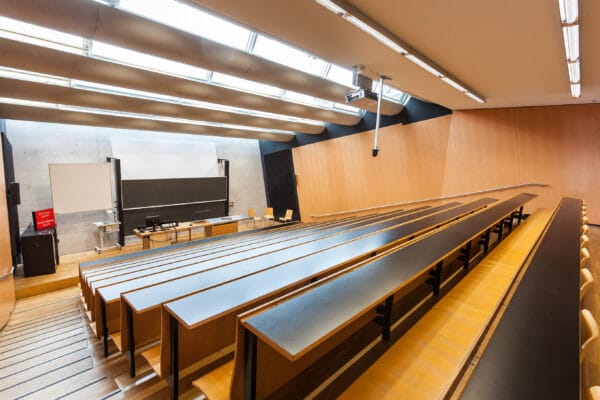
NAME:
SOWI - HS 1
BUILDING:
SOWI
FLOOR:
0
TYPE:
Lecture Hall
CAPACITY:
160
ACCESS:
Only Participants
EQUIPMENT:
Beamer, PC, WLAN (Eduroam), Overhead, Flipchart, Blackboard, Sound System, Handicapped Accessible, Microphones
Mapping snow depth in complex alpine terrain with satellite photogrammetry challenges the limits of 3D-Change Detection (3D-CD), particularly in steep topography and low-contrast conditions. This study evaluates and compares Pléiades PHR and the next-generation Pléiades Neo (PNEO) for snow depth mapping over Kawarau/The Remarkables in Aotearoa/New Zealand.
Tri-stereo acquisitions from PHR and PNEO during winter/spring 2022, combined with snow-free lidar (2016) and PHR (2020) datasets, establish a benchmark for sensor performance. GNSS campaigns provided photogrammetric control and validation, including an in-situ GNSS snow depth survey on and off ski trails, nearly coinciding with the PHR snow-on acquisition. The processing workflow applied an innovative bundle-block adjustment method that automatically propagated absolute georeferencing through cross-matching virtual ground control points (vGCP) from the snow-off photogrammetric model. This approach ensured sub-pixel alignment and enabled repeatable, coherent mapping of snow depth distribution with minimal convolution with the challenging topography.
The results confirm PHR’s capability for snow depth mapping with sub-meter accuracy and demonstrates PNEO’s improved spatial resolution and ability to capture finer-scale snow distribution patterns with greater precision. By validating our cross-matching technique, this study also establishes a repeatable and automated workflow for satellite photogrammetric snow depth mapping in complex terrain.

We and use cookies and other tracking technologies to improve your experience on our website. We may store and/or access information on a device and process personal data, such as your IP address and browsing data, for personalised advertising and content, advertising and content measurement, audience research and services development. Additionally, we may utilize precise geolocation data and identification through device scanning.
Please note that your consent will be valid across all our subdomains. You can change or withdraw your consent at any time by clicking the “Consent Preferences” button at the bottom of your screen. We respect your choices and are committed to providing you with a transparent and secure browsing experience.